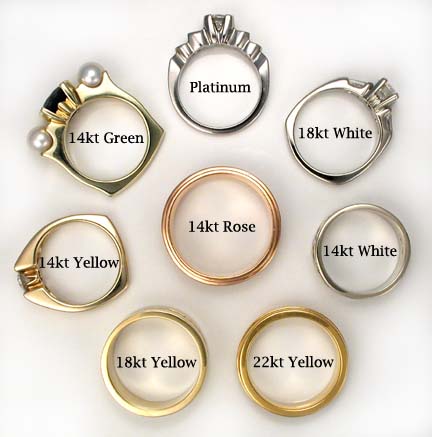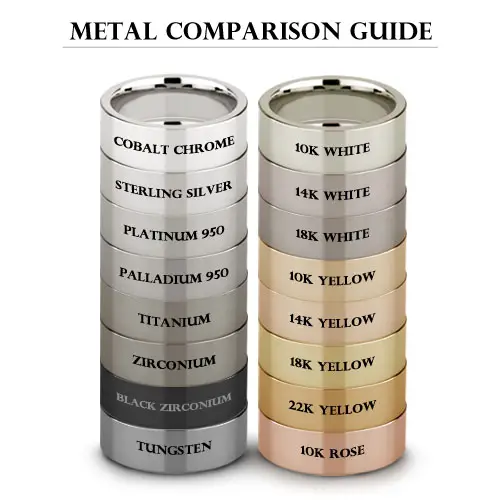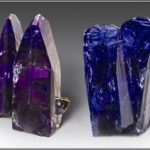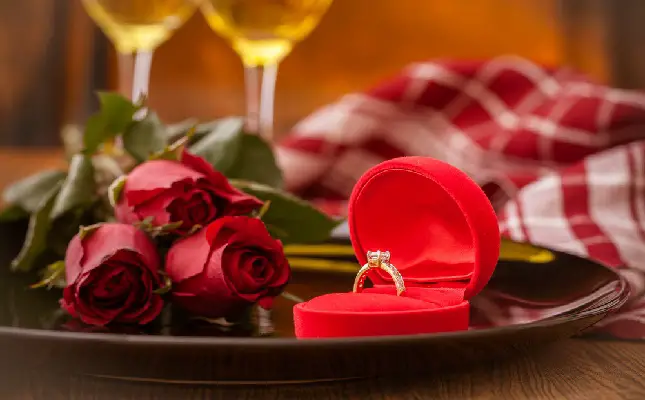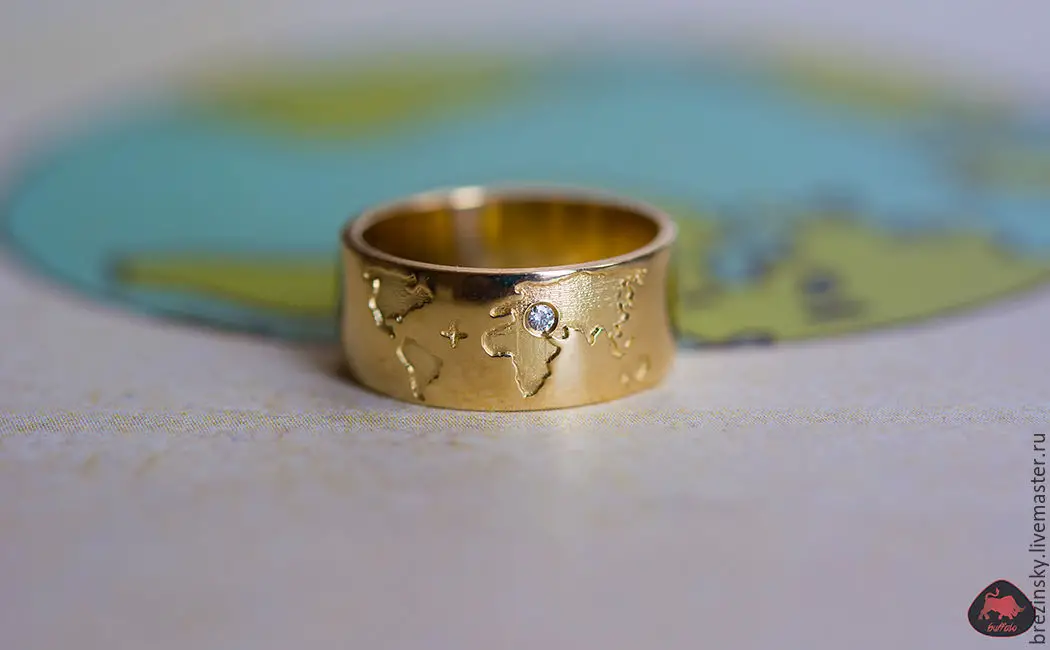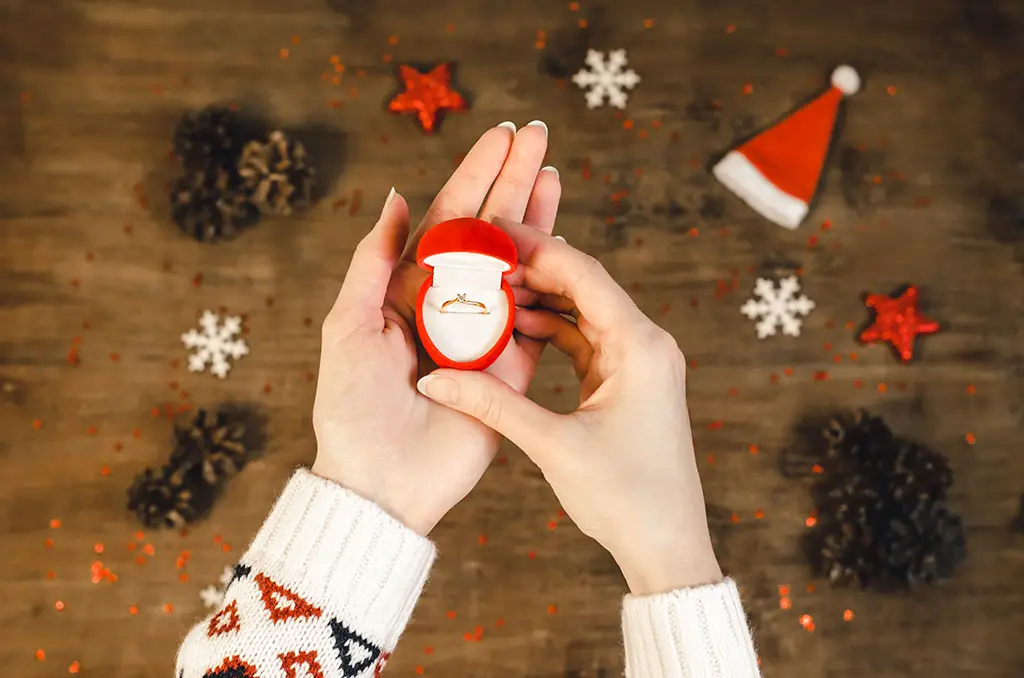Sure, the diamond is the part that everybody cares about. But the precious metal you choose for your engagement ring is more important than you may think…
At first, yellow gold was the only choice for engagement rings. Then white gold and platinum came along, and now rose gold is a thing too – plus many more. What’s a girl to do? Here’s what you need to know about the most popular engagement ring metals.
Yellow Gold
It’s the traditional and timeless choice. Yellow gold looks good with pretty much any gemstone and clearly has an enduring appeal among brides to be. We don’t need to tell you anything else about why you should choose this precious metal. But what other stuff do you need to know?
A lot of couples stress about what karat to choose for the engagement ring. 24 karats seems to hold a more prestigious reputation, but there is a downside (other than it being more expensive). 24 karats is gold in its purest form. You’ll get a rich, warm, yellow tone with an antique vibe. So far, so good. But pure gold is very malleable, which means it’s guaranteed to pick up dents, scuffs and scratches no matter how careful you are.
18 karat gold is 75% pure gold and 25% other metals – usually zinc, nickel, copper, or similar metals. These are added to improve the durability of the gold, which means it maintains its polish for longer and is less likely to get scuffed up over time. In short, it’s a good balance of durability and purity. The disadvantages? The colour is not as rich, and since it’s still ¾ pure gold it’ll still pick up some scrapes and bruises.
White Gold
The exact same karat story as above goes for white gold, and rose gold below. White gold is an alloy of gold and at least one white toned metal – usually palladium, nickel or manganese. Some white gold rings are plated with rhodium which gives a platinum-like lustre – these will require replating once every couple of years to keep them looking shiny and new.
As for style, white gold has been the popular choice for the past few decades for a good reason. It’s contemporary, it complements diamonds and makes them look even more dazzling, and it also serves as a fantastic backdrop for coloured gemstones. In recent years the go-to style for modern engagement rings has been diamond halo settings or pave diamond bands, which can sometimes look odd or even tacky when set in yellow gold. In white gold, however, it all just seems to fit.
Rose Gold
If you’ve ever mistaken rose gold for copper, you’re not entirely wrong; it’s an alloy of gold, copper, and usually a small amount of zinc or nickel. The more copper there is in the alloy, the more ‘rose’ the tone. Since it has only recently exploded in popularity, rose gold is a very on-trend choice and there is a huge variety of styles and designs to be found.
The advantages to rose gold are pretty much endless. For a start, it works with any skin tone. Seriously, try it! It gives diamonds a vintage and ethereal yet very modern feel, and it also works with a variety of coloured gemstones. We’re not huge fans of combining darker coloured stones like sapphire or ruby with rose gold, personally. But lighter gems like yellow diamond, aquamarine, amethyst and morganite (our personal favourite) look nothing short of stunning.
Platinum
Platinum is pretty much the limitless budget version of white gold. It doesn’t come cheap, but it does look and feel ultra luxurious. Platinum is so lightweight, you’ll barely feel like you’re wearing a ring at all. It’s incredibly durable and will maintain its lustrous shine and unscathed appearance pretty much forever. And like white gold, it looks good with anything from diamonds to the full colour spectrum of gemstones.
However, platinum isn’t perfect either. It’s near invincibility is a drawback as well as a benefit – if you ever need to cut a platinum ring off a swollen finger, good luck. It’s difficult to get platinum rings resized, so you need to be 100% sure you’ve measured your ring finger accurately before you order your ring. Oh, and did we mention it’s expensive? Upgrading from white gold to platinum can easily add and extra 25% to the cost of your engagement ring.
Honourable Mentions
While the above four metals are the most popular engagement ring metal choices, there are plenty more new kids on the block that are quickly catching up. If you’re interested in something a little more alternative, it’s worth checking out these guys:
- Palladium: Like platinum, palladium rings are pretty much indestructable. They’re even more lightweight than platinum – around half the weight, to be precise. They don’t require polishing and will keep their alluring silvery lustre through cleaning alone. Since they’re not as dense as platinum, they’re much more cost effective too.
- Tungsten: A true alternative choice, tungsten carbide rings have a unique grey tone and can often be found with a range of interesting finishes. This metal’s durability is fantastic, and it’s also highly resistant to scratches. Tungsten wedding bands are proving to be extremely popular among grooms.
- Meteorite: That’s right, meteorite engagement rings are thing and yes, they’re made from actual meteorite rock. They come from samples that crashed on earth billions of years ago rather than the ones floating in space, but still… it’s pretty damn cool. Several specialist companies are making meteorite engagement rings and wedding bands – they’re all just a quick Google search away.
- Cobalt: Cobalt has the look of chrome but the quality of platinum; highly polished with a silvery tone but lightweight and able to take plenty of rough of tumble. In fact, cobalt is so durable that it’s actually used in knee and hip replacements! Cobalt rings are also highly resistant to scratching, although not quite as much as tungsten.
- Titanium: If you want a symbolic representation of the strength of your love, titanium is the way to go. A light, white-ish grey tone, it’s another metal that can be finished in a wide variety of ways for an interesting look. However, titanium engagement rings are impossible to resize, engrave or cut off in an emergency; just some food for thought.
- Wood: Okay, so it’s not a metal. You caught us! But with consumers becoming more and more conscious of their carbon footprint and the fragile state of the planet, there’s a strong case for wooden engagement rings. This alternative choice is sure to be a conversation starter, and there are plenty of design options for everyone’s tastes.
